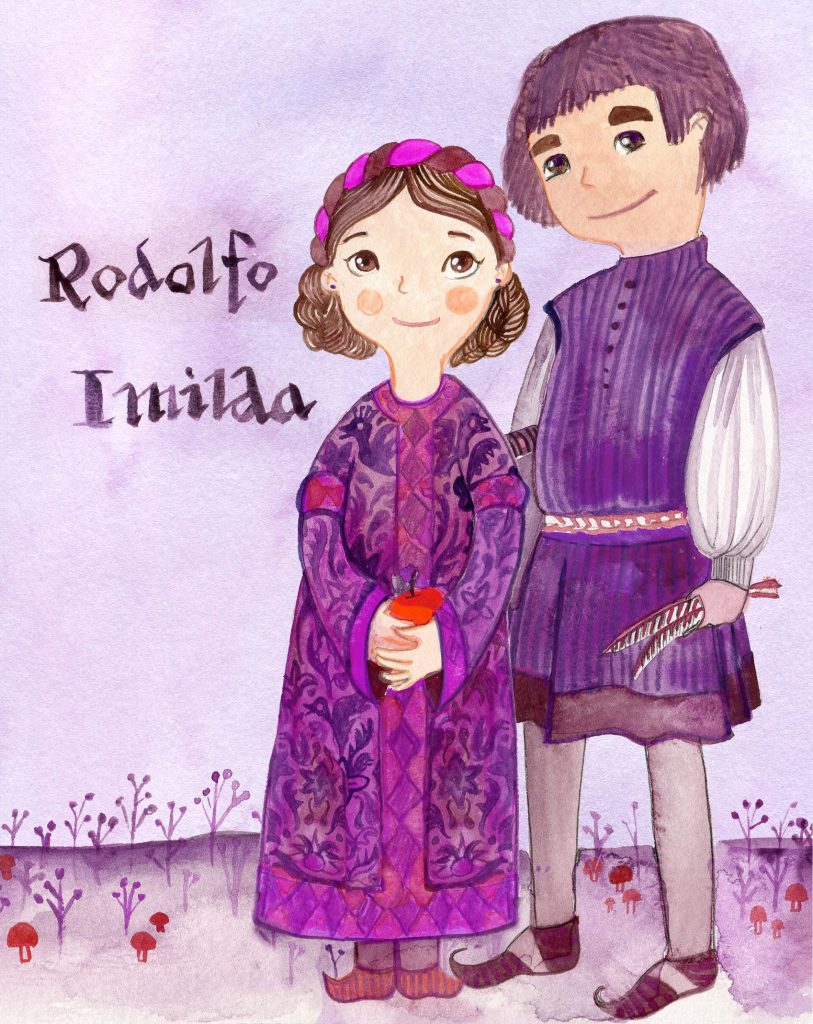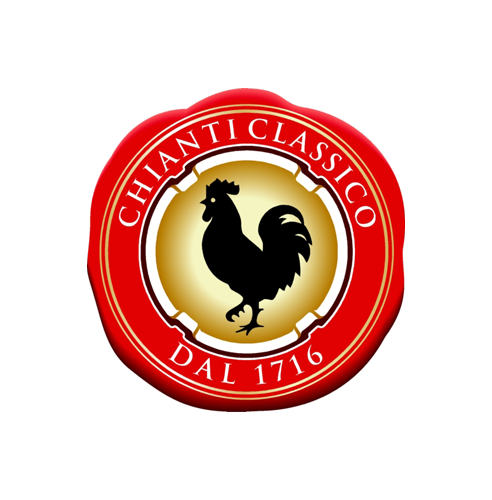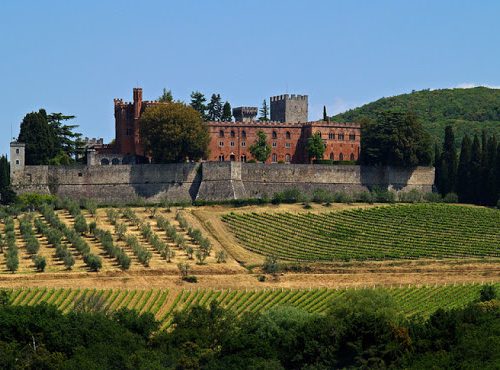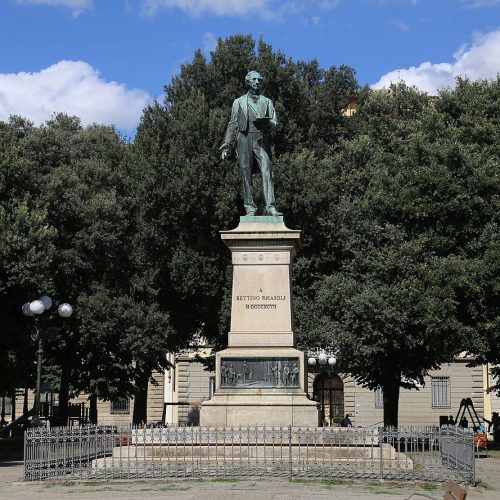
Cetamura Wine Cellar
Image of the Black Rooster
Location | Well #1 |
Already in late Medieval times the wine of Chianti came under the purview of the historic League of Chianti. Its symbol was the Black Rooster (il Gallo Nero), associated with an ancient tradition that the crowing of a black rooster determined who controlled the territory of Chianti. Today the growers of grapes of the Chianti region are united in a Consortium (Consorzio del Vino Chianti Classico) that utilizes the Black Rooster as the symbol of the highest quality wines.
The name of Chianti—in Latin, Clante—has been much discussed. Research on Medieval documents of the 11th-13th centuries has revealed numerous early references to places “in Clanti.” They are all generally within the area of the Massellone creek (Torrente Massellone) that runs through Gaiole in Chianti. The valley of this creek or river therefore seems to be the first and original location of the name Chianti. The Massellone rises at the base of the hill of Cetamura, suggesting a strong connection with the Etruscan, Roman and Medieval remains that have been discovered on that site and a long history for the river and the region.
The wines of Chianti were first mentioned in a memo to the Florentine merchant Francesco di Marco Datini in 1398, where the wine was referred to as white. This color need not be a surprise considering the tantalizing evidence that the ancient Chianti wines at Cetamura were white. In later centuries the red wine became better known, and in the 19th century became famous through the revolutionary practices of winemaking on the estate of Brolio, by the Baron Bettino Ricasoli, descendant of the family that once owned Civitamura.
Etruscan activities for kids
Meet Lucius & Fulvia
Roman activities for kids

Meet Rodolfo & Imilda
Medieval activities for kids







